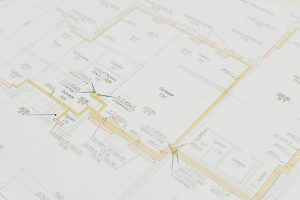Exploring the Potential of Graph Databases for Relationships
The world is becoming increasingly data-driven, with organizations of all sizes relying on data to make informed decisions. As the amount of data being generated continues to grow, traditional databases are no longer sufficient to handle the complexity and interconnectedness of modern data. This has paved the way for a new breed of databases – graph databases.
What are Graph Databases?
A graph database is a type of NoSQL database that uses graph theory to store and manage data. In simple terms, it represents data as nodes (vertices) connected by relationships (edges). This makes it easier to represent complex relationships between different data points, something that traditional databases struggle with.
A key difference between a graph database and other databases is that the relationships in a graph database also have properties, making them more descriptive. For example, in a traditional database, you may have a table for customers and another for orders, with a foreign key linking the two. However, in a graph database, the relationship between a customer and an order can also have properties like the date the order was placed, the quantity, and the price. This added level of detail allows for more sophisticated data analysis and querying.
The Potential of Graph Databases for Relationships
Better Performance with Complex Relationships
One of the main advantages of graph databases is their ability to handle complex relationships with ease. In traditional databases, joining multiple tables to retrieve data can be time-consuming and resource-intensive, especially when dealing with large datasets. Graph databases, on the other hand, store relationships as first-class citizens, making it much faster and more efficient to query complex relationships. This makes graph databases an excellent option for applications that require deep and dynamic relationships between data points, such as social networks and knowledge graphs.
Flexible Data Modeling
Traditional databases typically require a predefined schema, making it challenging to adapt to changing data needs. On the other hand, graph databases use a schema-less approach, allowing for more flexible data modeling. This means that new relationships and properties can be added to the database without any impact on existing data. This flexibility is especially useful for businesses that deal with constantly evolving data, as it allows for quicker adaption and innovation.
Real-Time Insights
Data is becoming increasingly time-sensitive, with businesses needing to make decisions in real-time based on the latest data. Graph databases excel in providing real-time insights, as they are designed for efficient and quick data retrieval. This is because graph databases store both data and relationships together, making it easier and faster to query and analyze data in real-time.
Better Data Quality
Data quality is crucial in today’s data-driven world. Poor data quality can lead to inaccurate insights and decision-making, which can be costly for businesses. In traditional databases, data integrity is primarily ensured through constraints and validations, but these can be limiting. In graph databases, data quality is achieved by enforcing data relationships, which means that only valid relationships are allowed in the database. This leads to better data quality and accuracy, which is essential for making informed decisions and gaining meaningful insights.
Conclusion
In conclusion, the potential of graph databases for relationships is immeasurable. They offer a more efficient and effective way of handling complex relationships, providing businesses with real-time insights, flexible data modeling, and better data quality. As the demand for more sophisticated and interconnected data grows, graph databases will continue to play a vital role in the world of data-driven decision-making.










